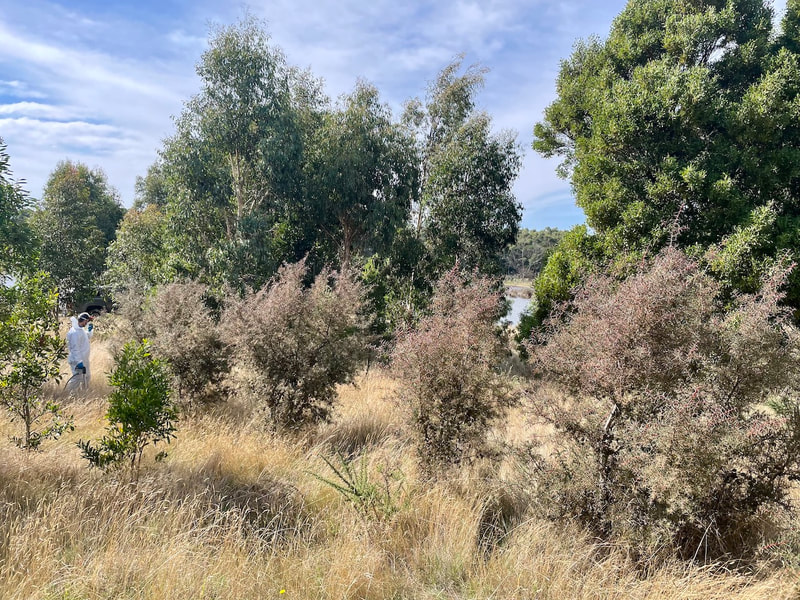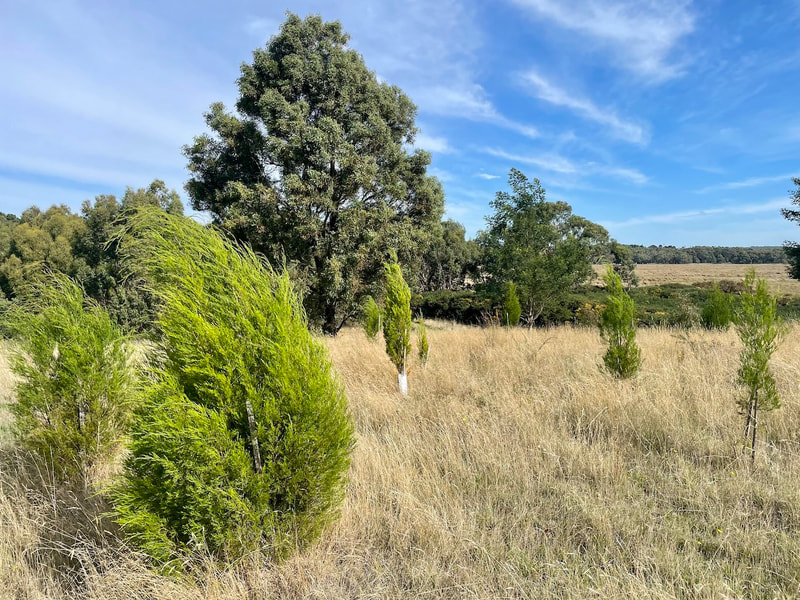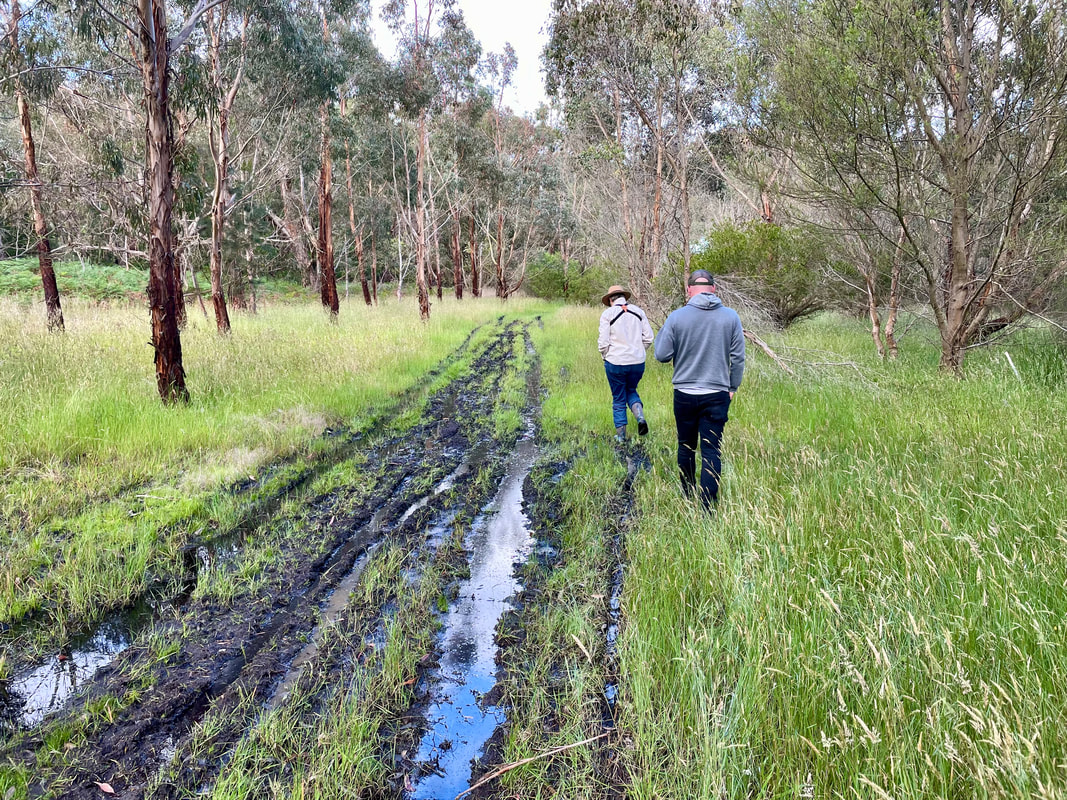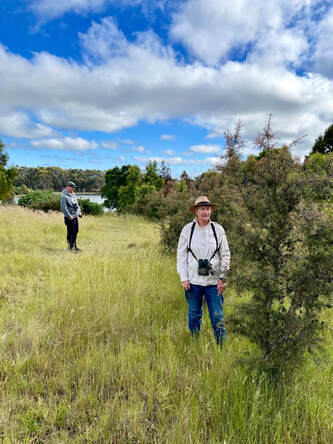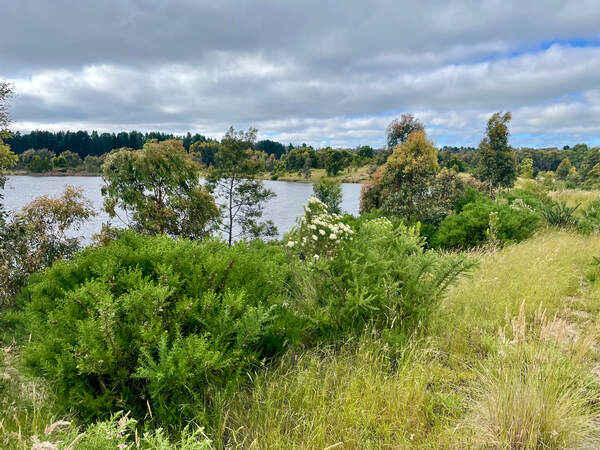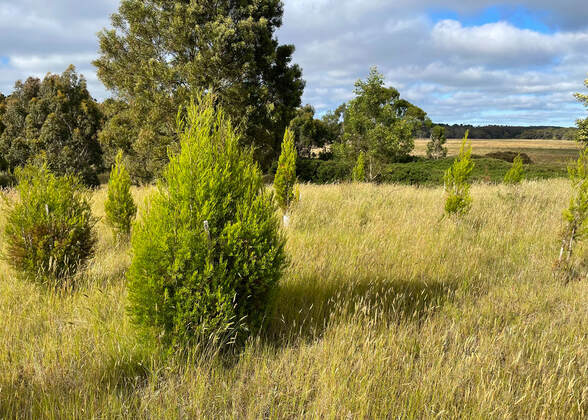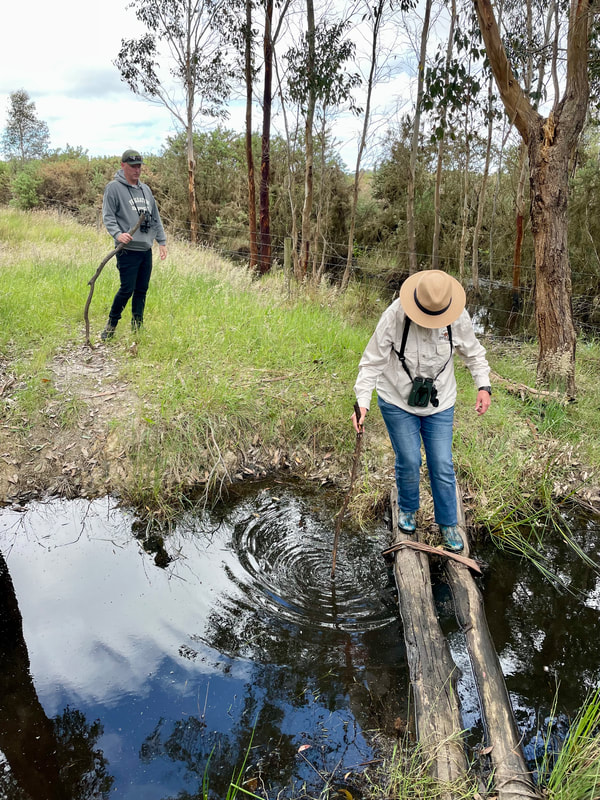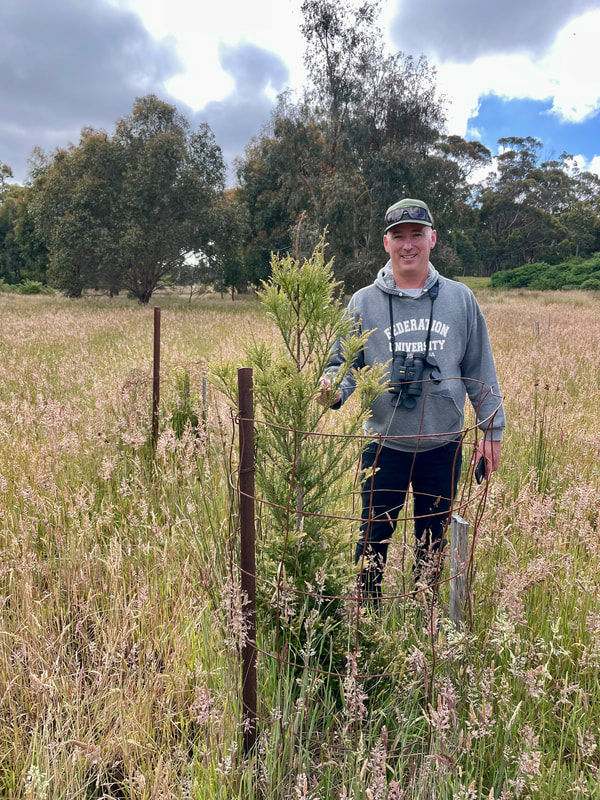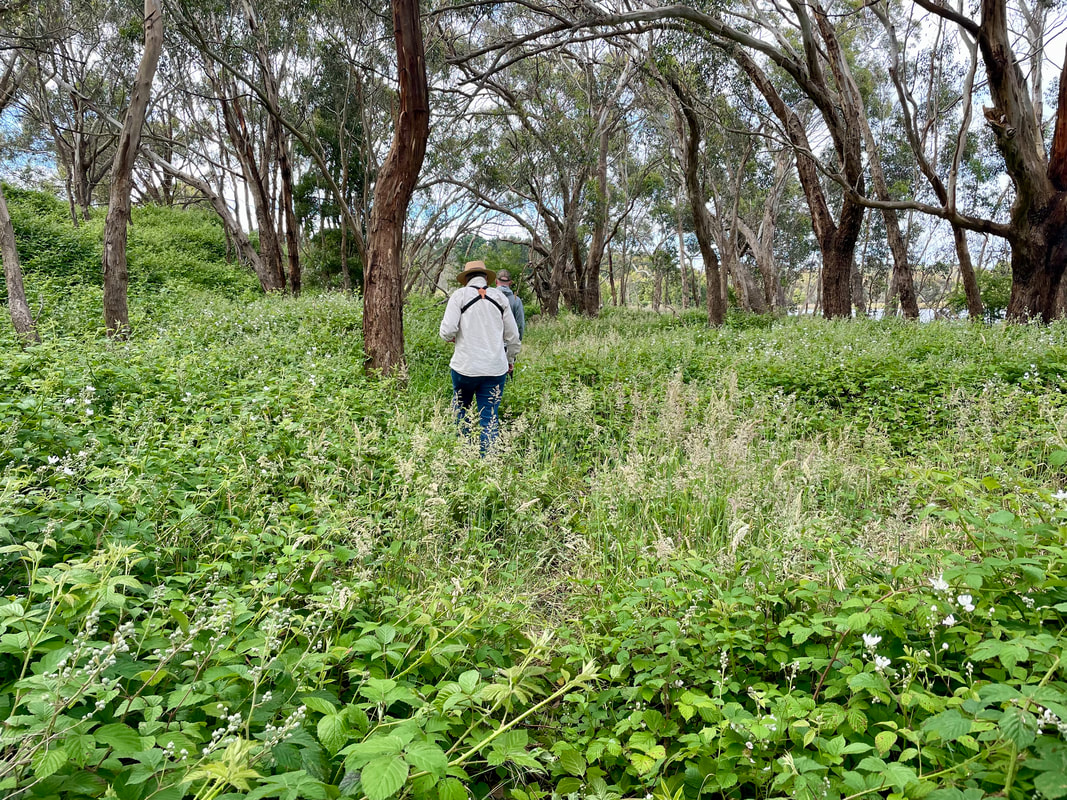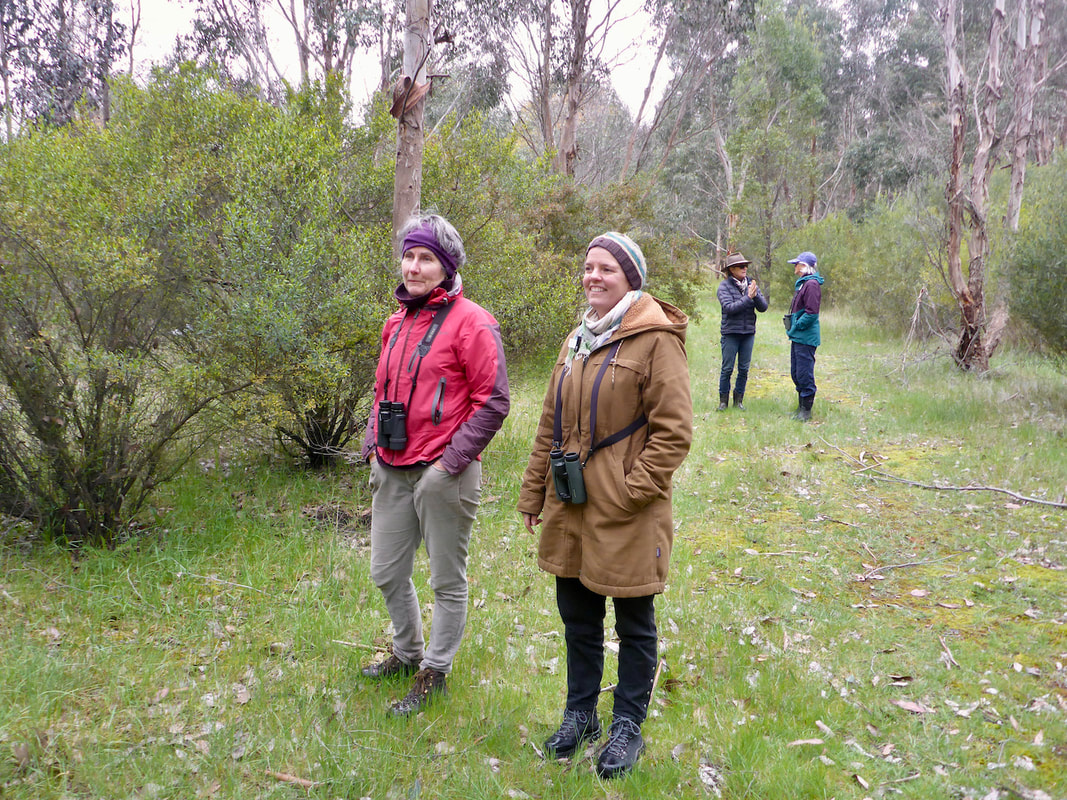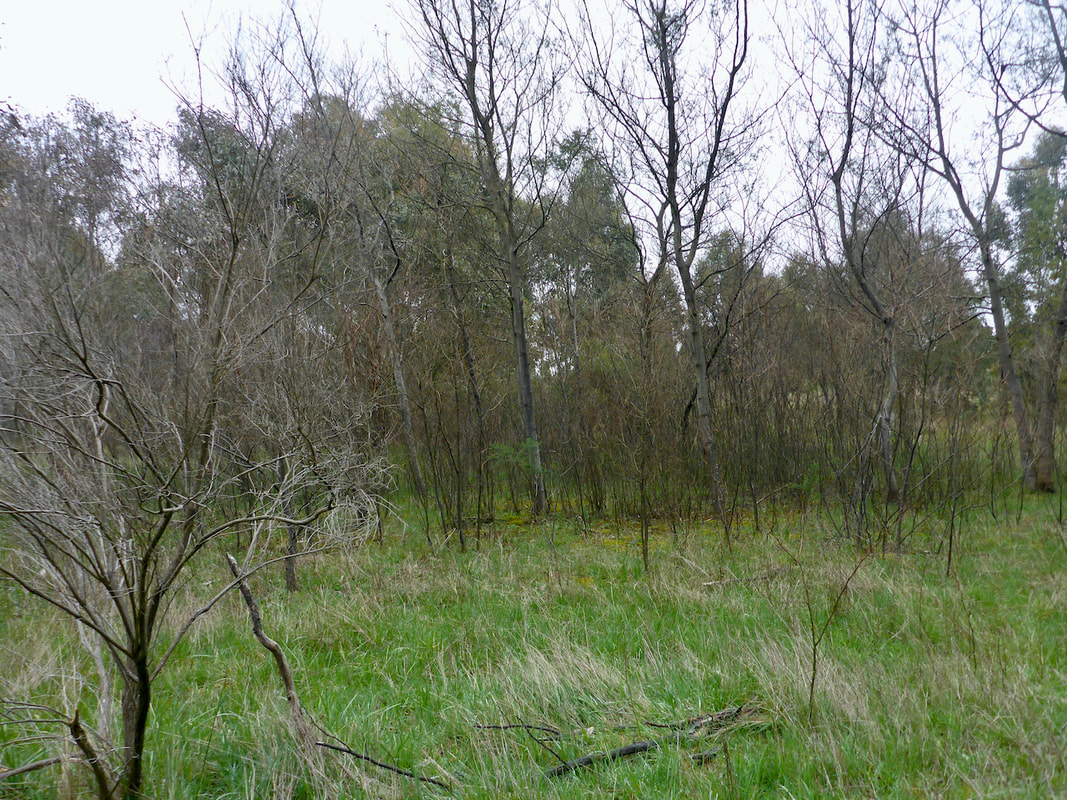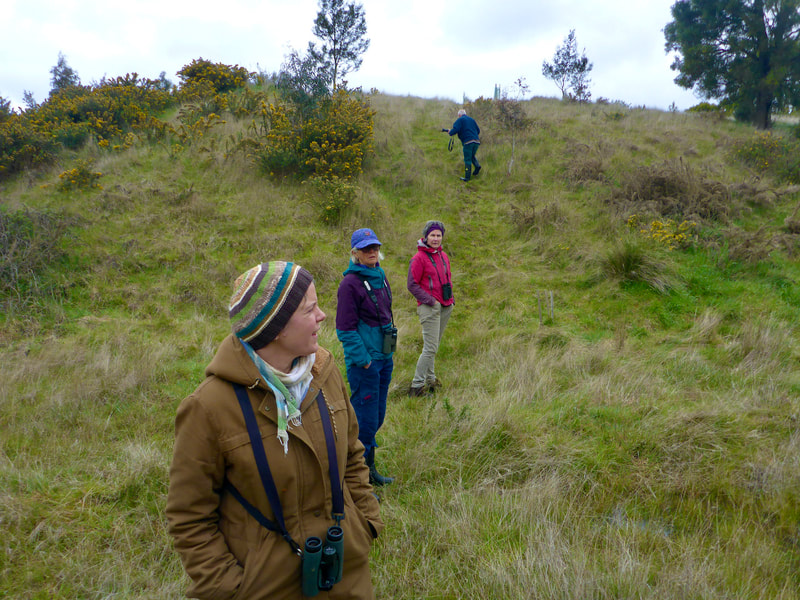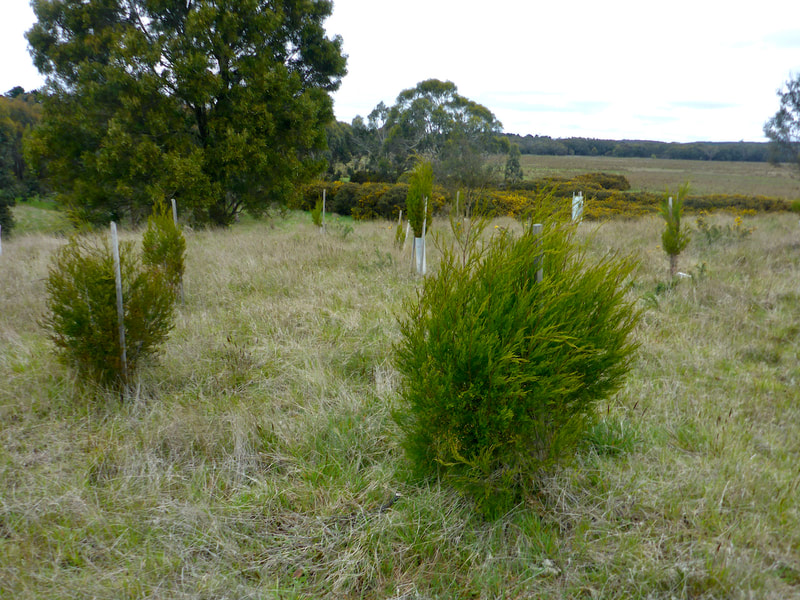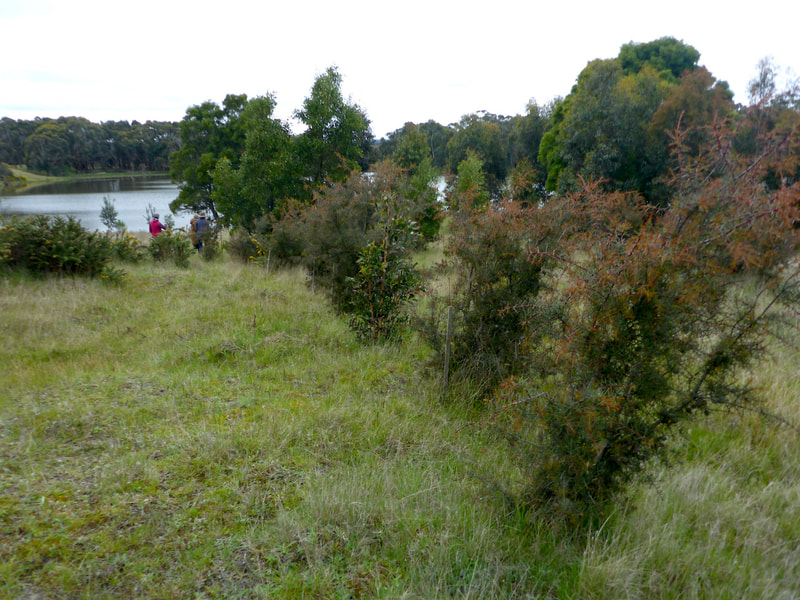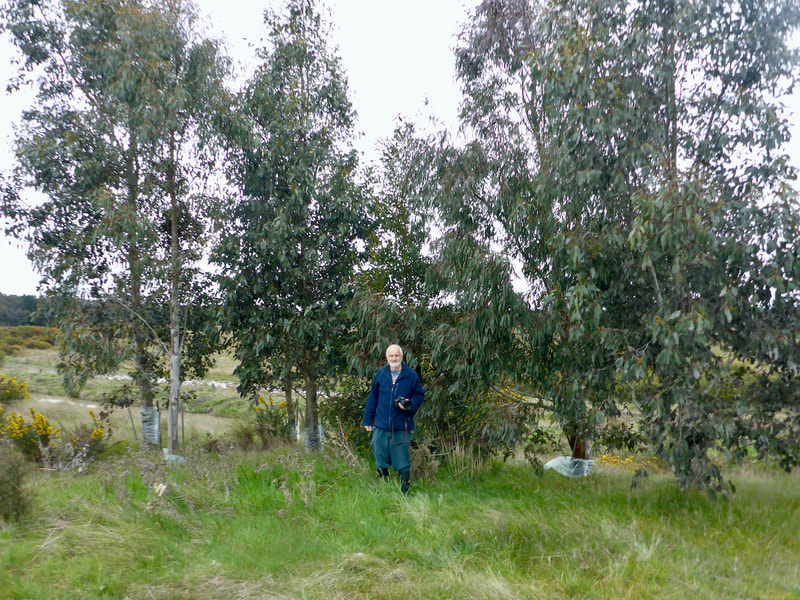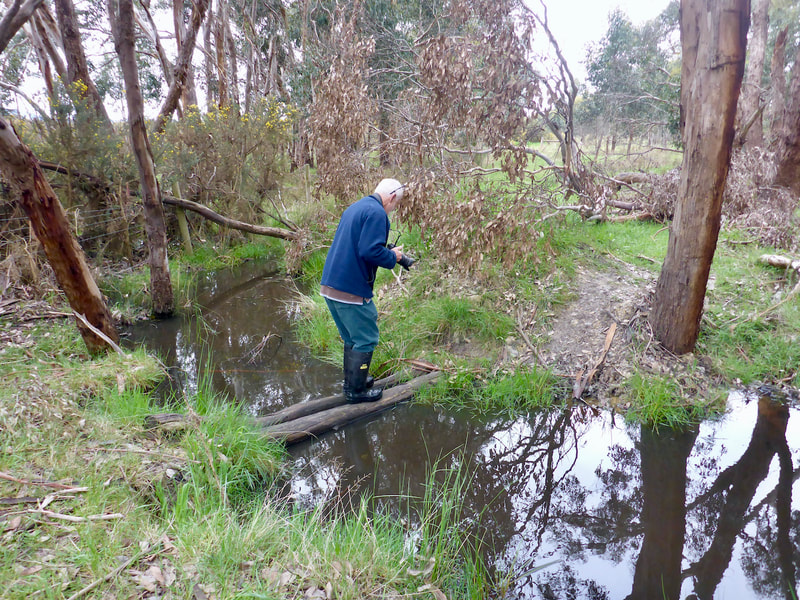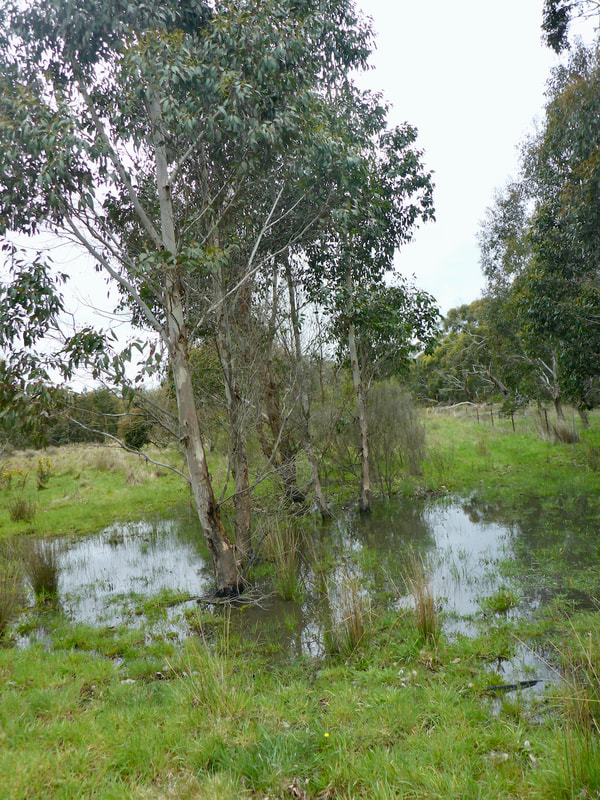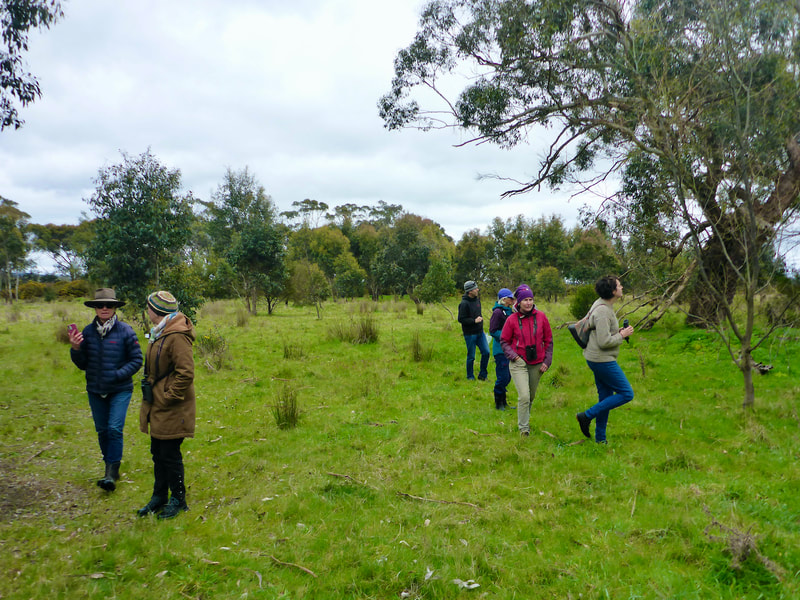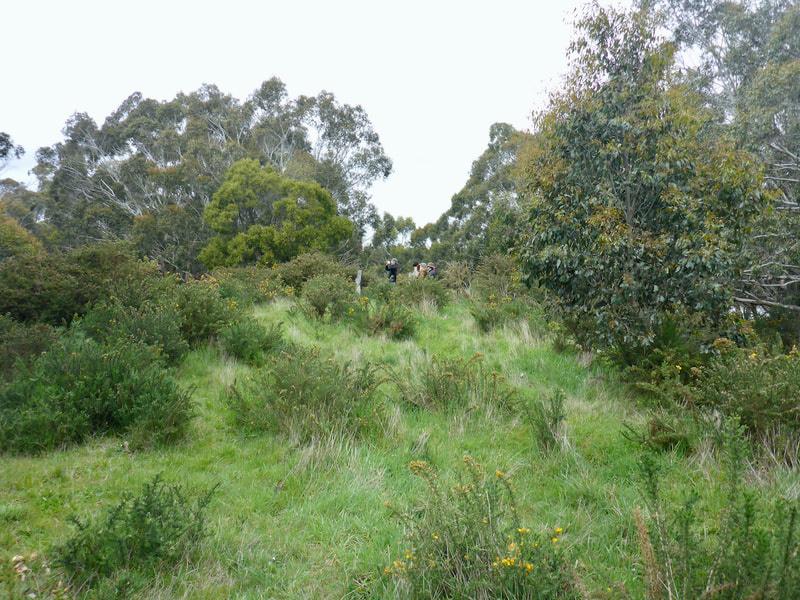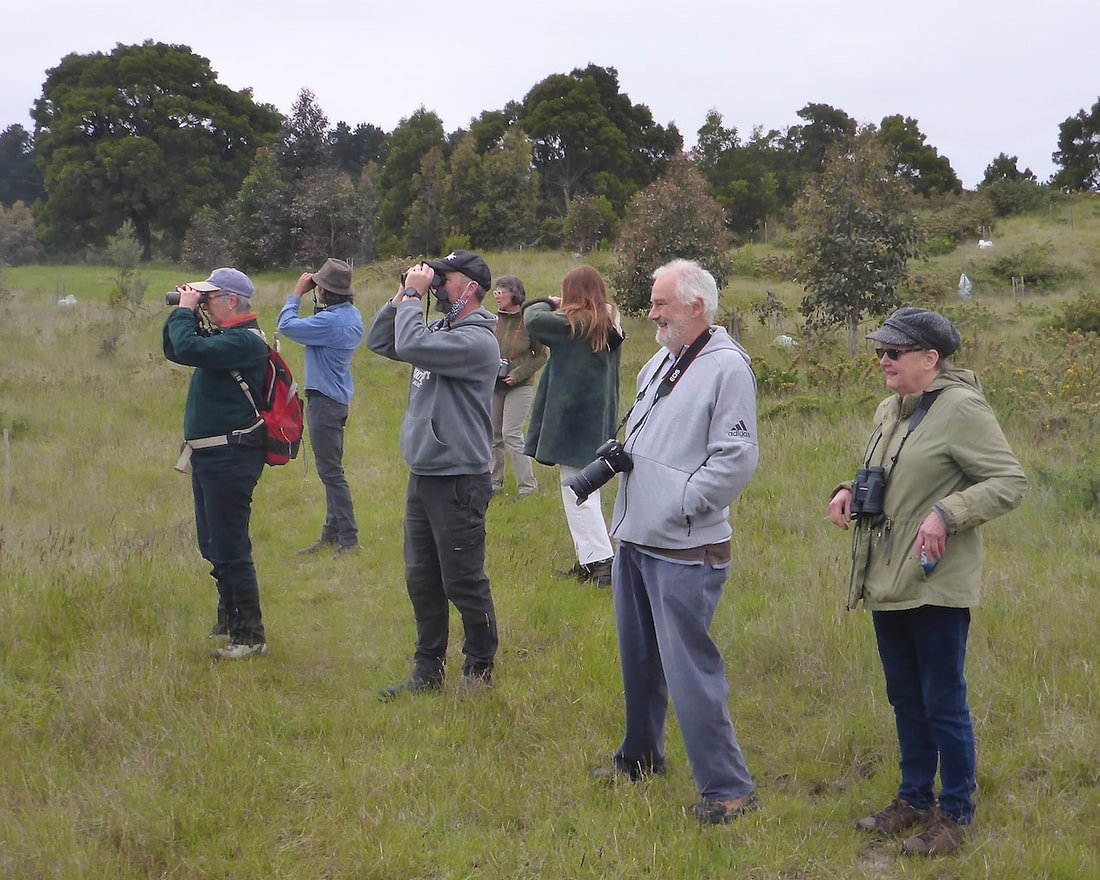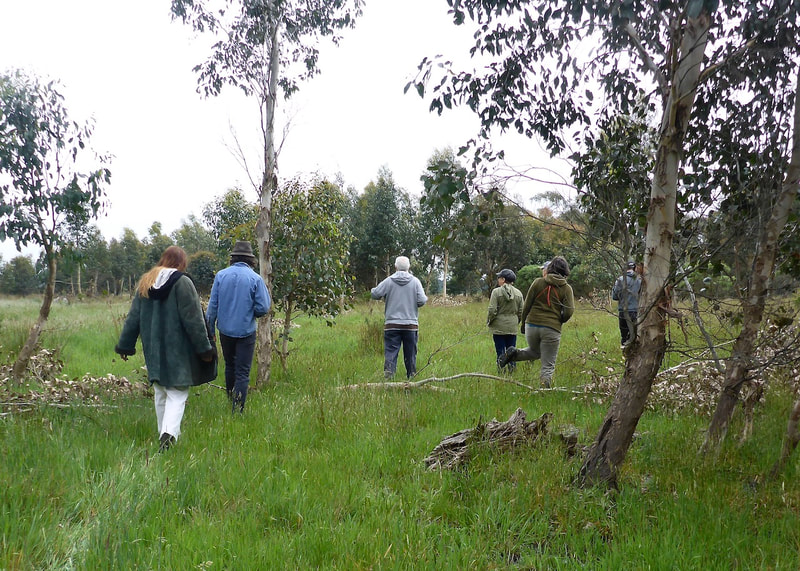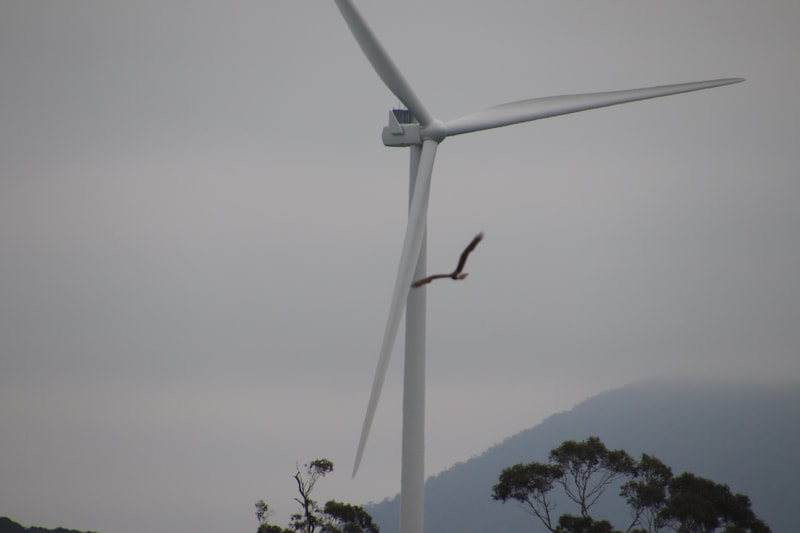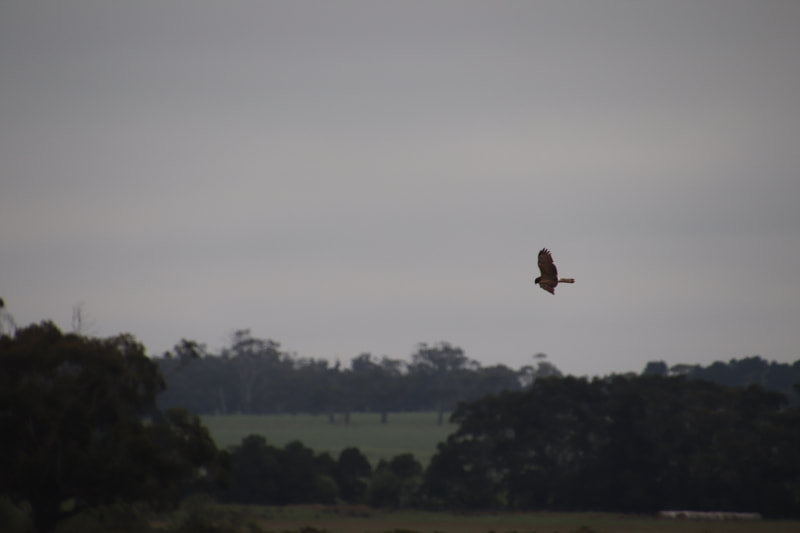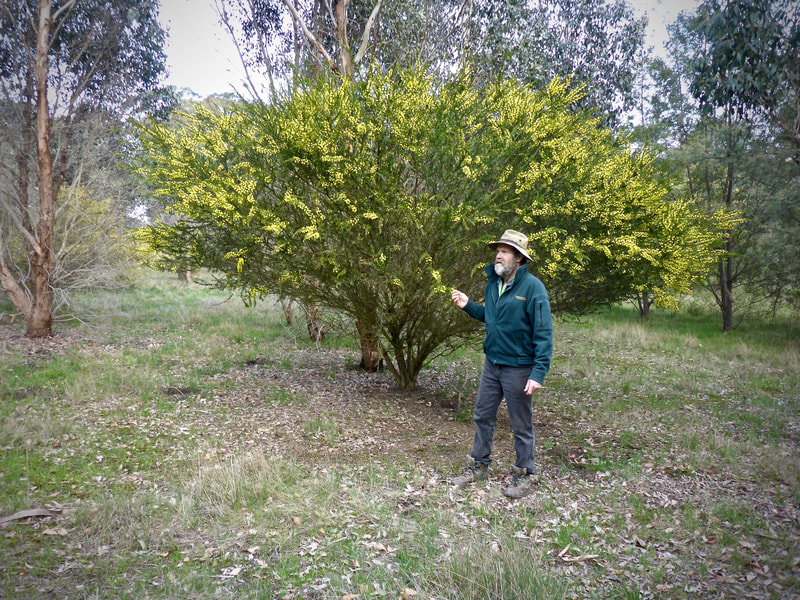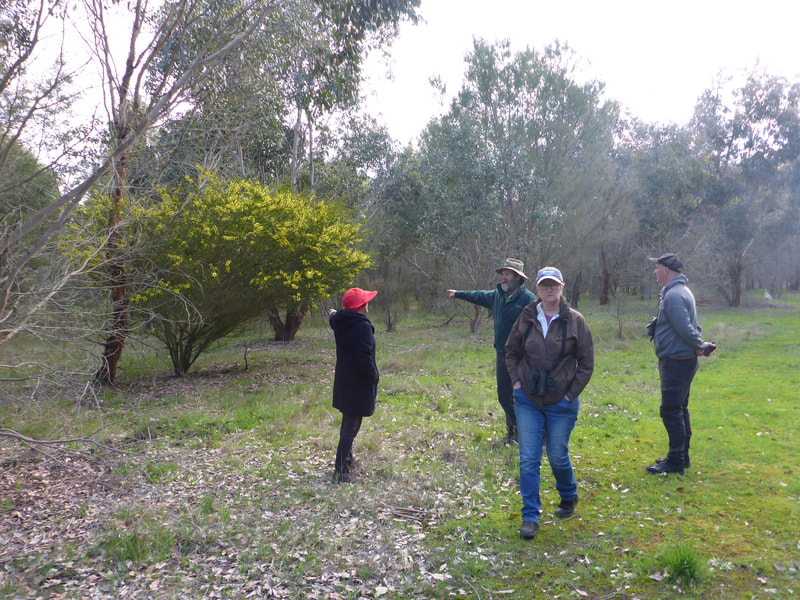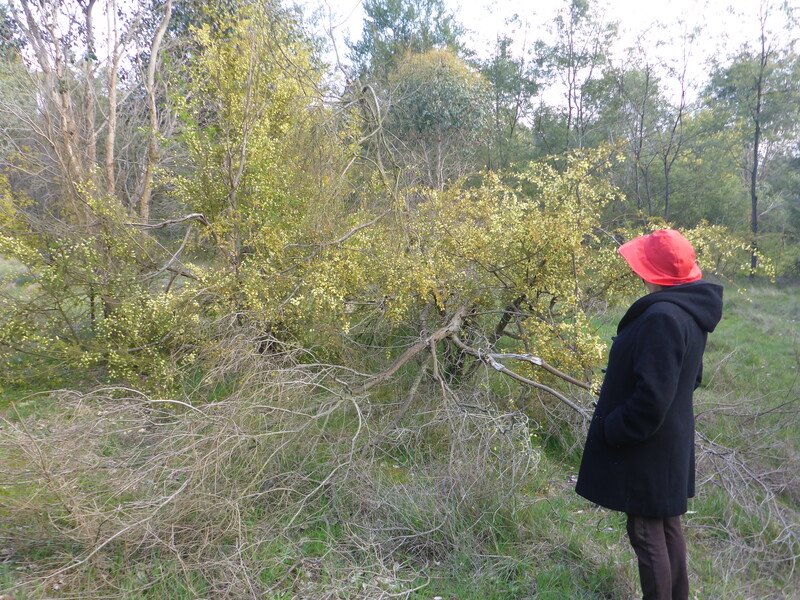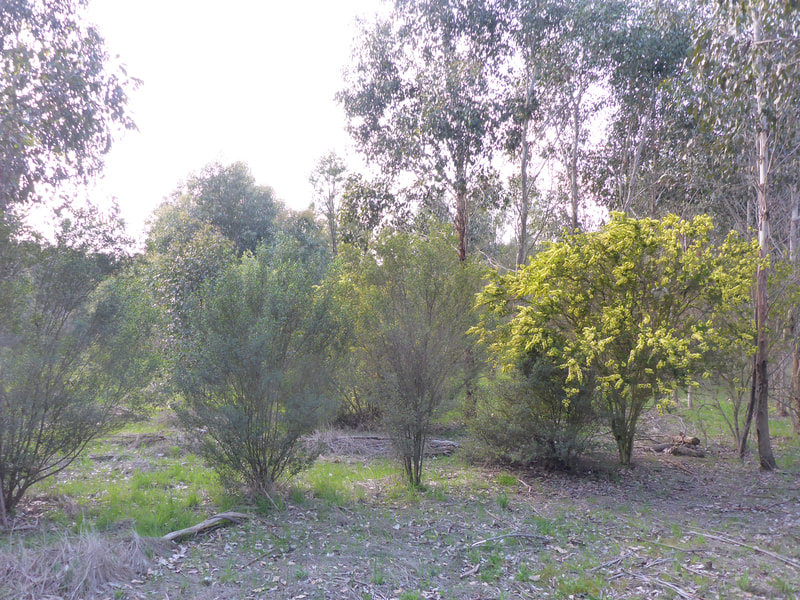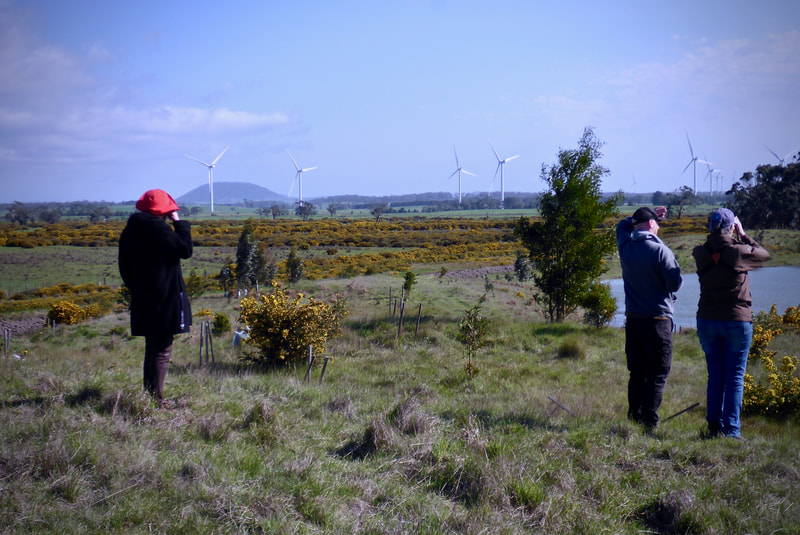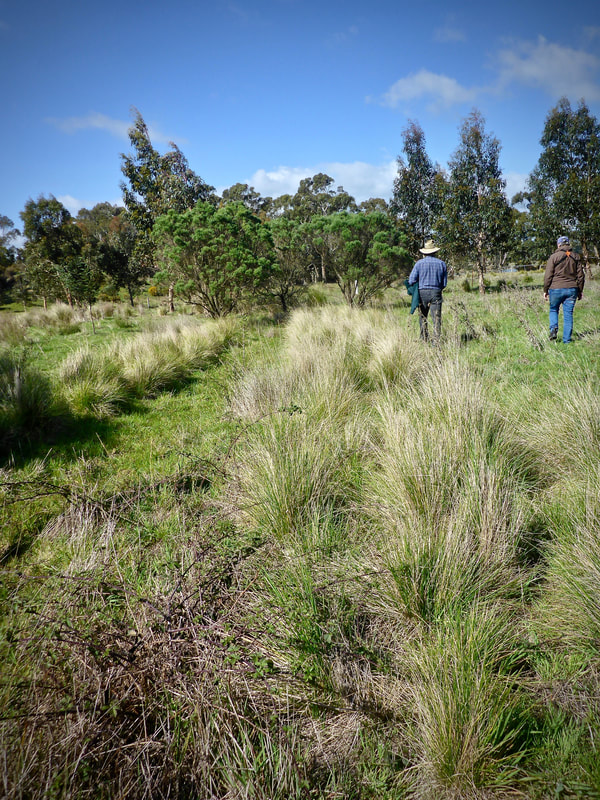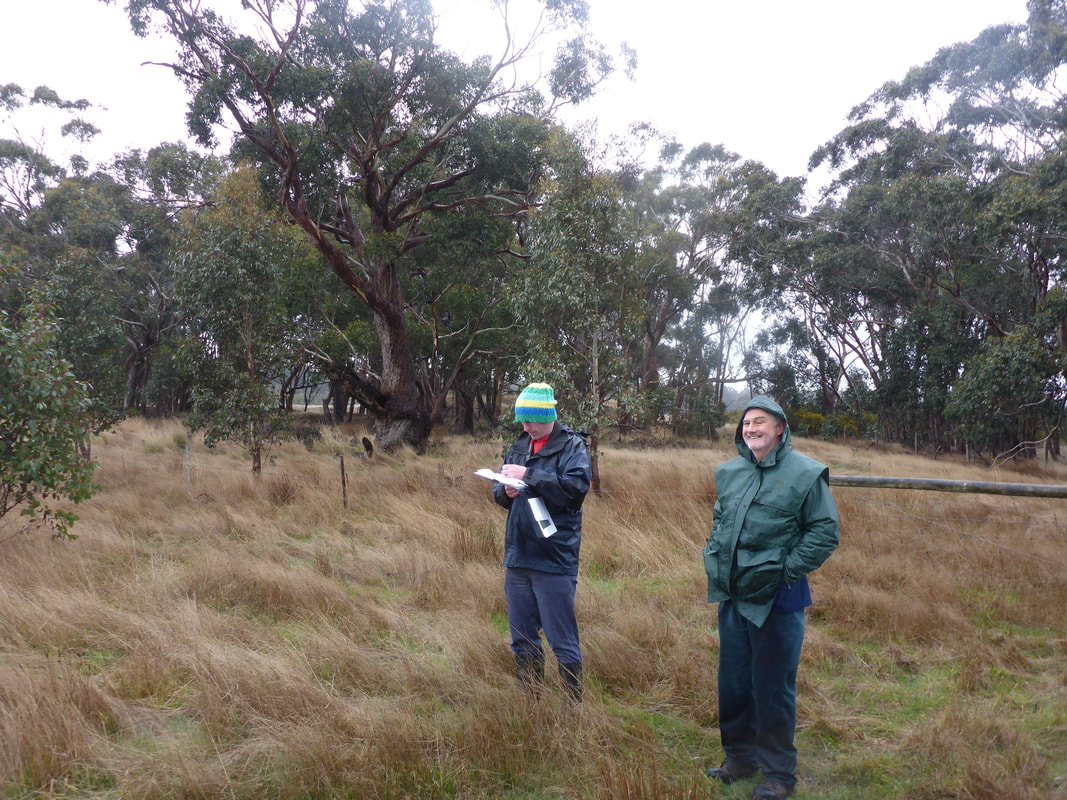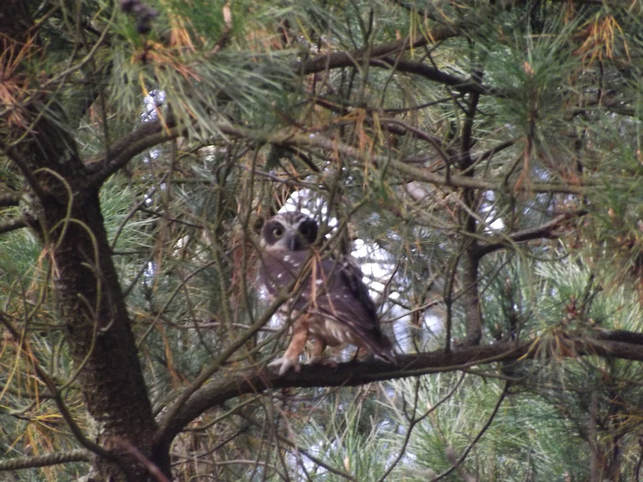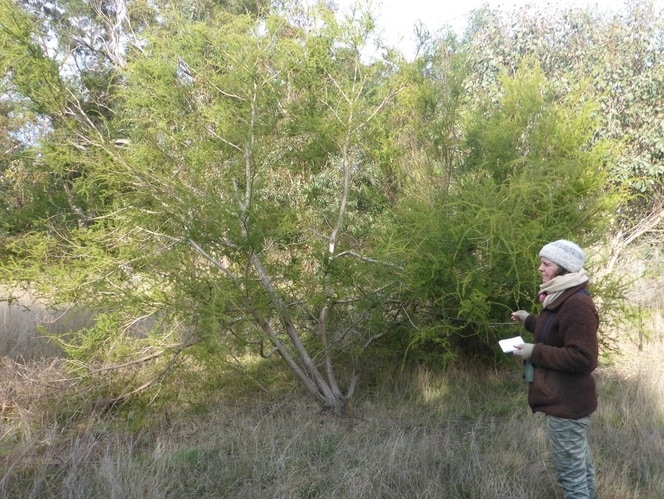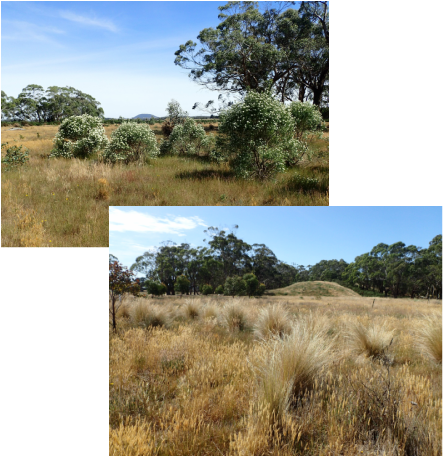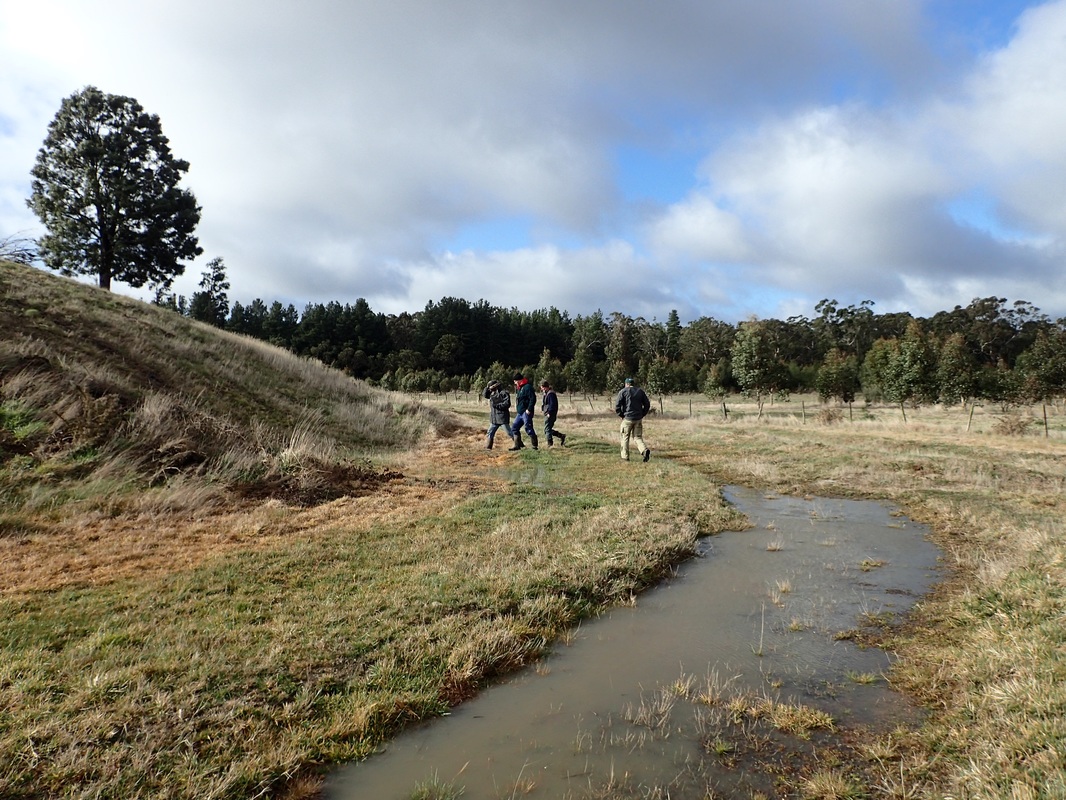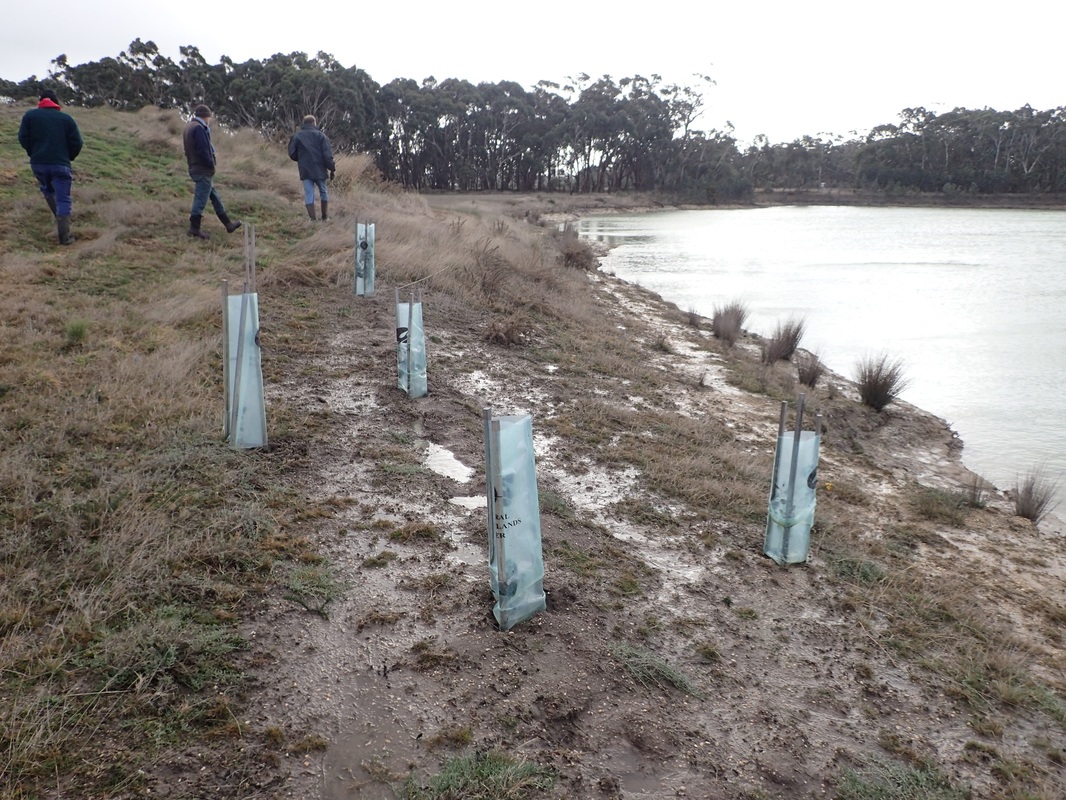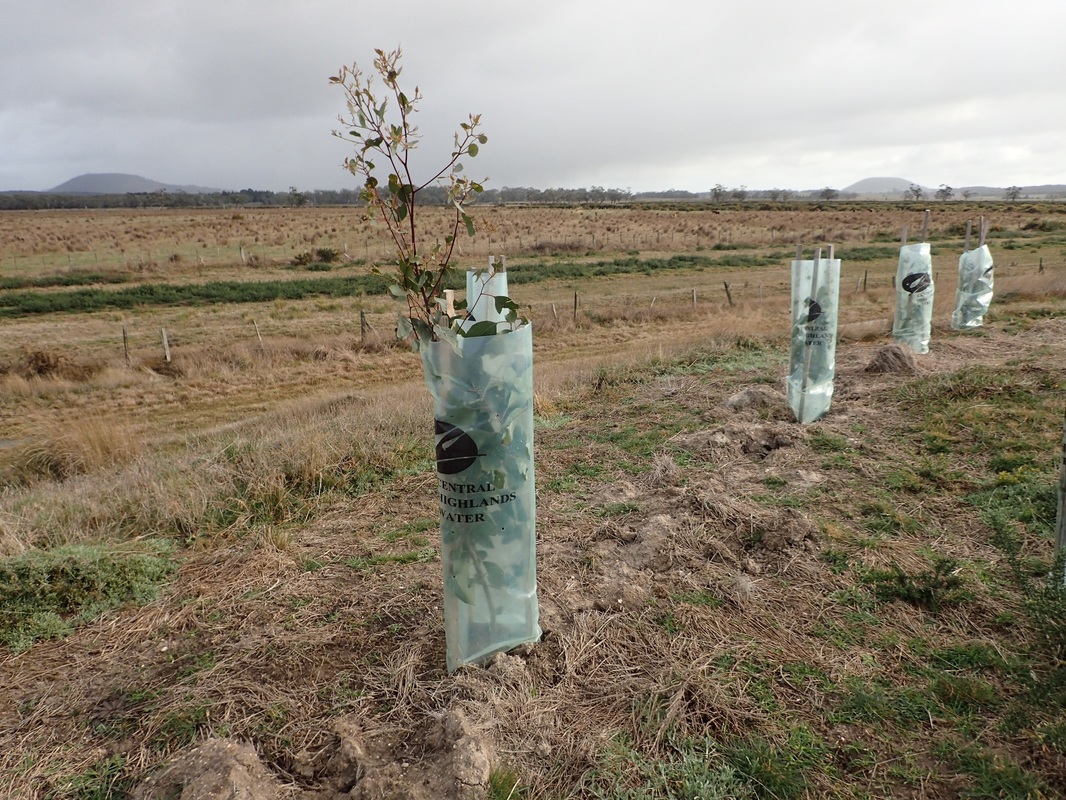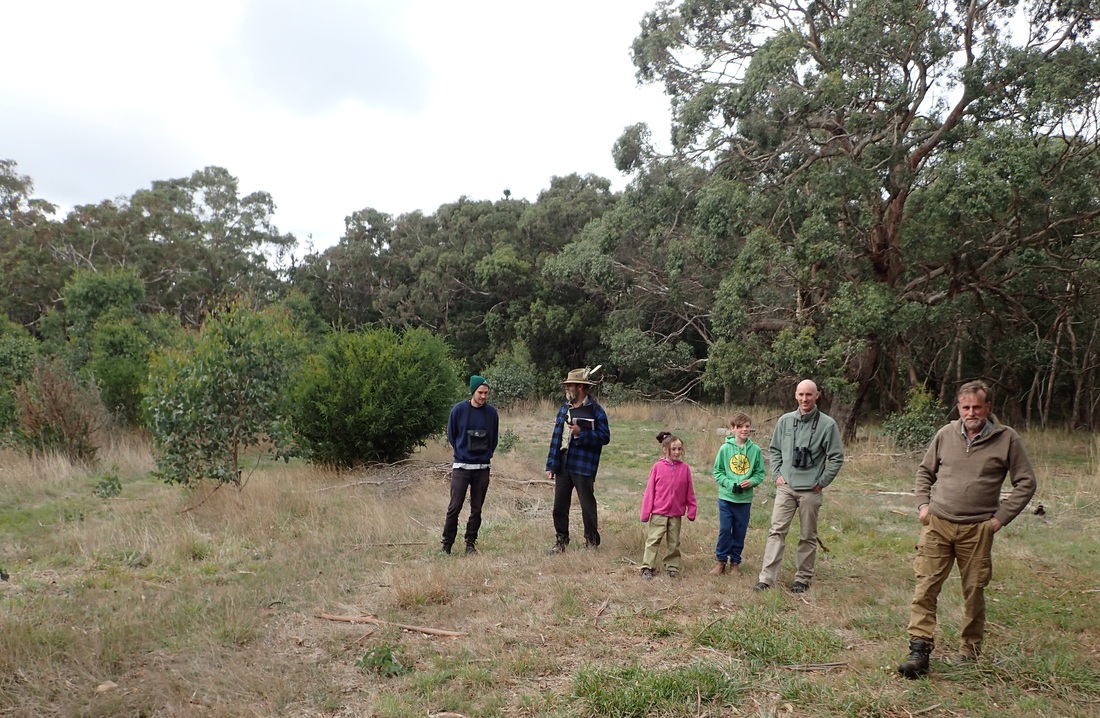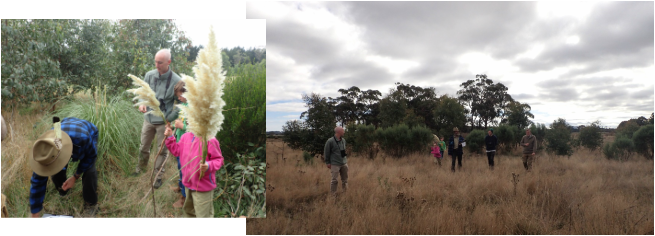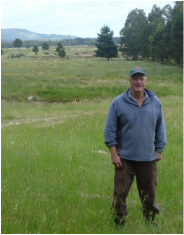| |
|
Hakea and callitris are growing strongly on top of the hill this autumn 2023 after good rains and now a mild,settled autumn.
0 Comments
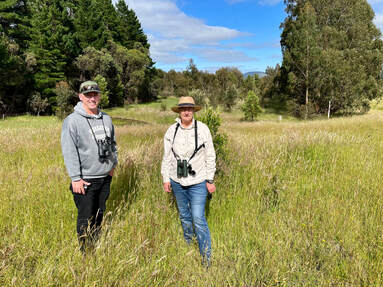 A little windy but we still averaged over 30 species – 31 to be exact. Highlights were a sacred kingfisher and a breeding pair of pallid cuckoos. No noisy miners, which must constitute another highlight. Made an early start of 8am. Very wet underfoot after weeks of incessant rain. Only three of us – Grant Palmer from Federation University, Louise Humble from BirdLife Ballarat and myself from BRT. Amazing plant growth – particularly noticeable on the banksias as well as the callitris and hakea on top of the hill. Three of the sequoia survive in ImLal North and two of them look like they may outstrip the roo attacks and grow to maturity. The weeds are of course not being left behind. Gorse and blackberries threaten to overwhelm in places. 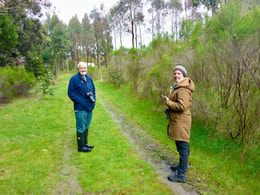 Tanya Loos (on right) with BRT President, Gary Featherston. Tanya Loos (on right) with BRT President, Gary Featherston. Seven of us took part in the spring bird survey led by ornithologist Tanya Loos. As enthusiastic and competent as ever. It was a still cloudy day with a couple of serious birders joining us. While only 33 species were recorded, these were present in large numbers, such as sighting of seven or more yellow faced honeyeaters – the first-ever species we recorded at ImLal. The plant growth this year has been truly remarkable, with even the shrubs now towering above us. One pronounced change was the dieback of the silver wattle, under serious attack from a mite. It's been a very wet spring and there was a lot of water laying about. Hopes were always high for a very productive spring bird survey at the ImLal Biorich site following the wet winter and pleasant survey conditions on the day, and the small group of birdos were not disappointed – a huge tally of 46 species was recorded along our usual 90-minute circuit! This is an impressive number of species for a single survey – for context, our previous visits in spring and winter 2019, yielded 28 and 22 species respectively.
Firsts for the spring bird survey included a Sacred Kingfisher and a Musk Duck on the dam. We watched a pair of swamp harriers hunting without harm among the Lal Lal Wind Farm turbines. For a full report of the spring bird survey by leader Grant Palmer, visit the menu for the Bird Survey.
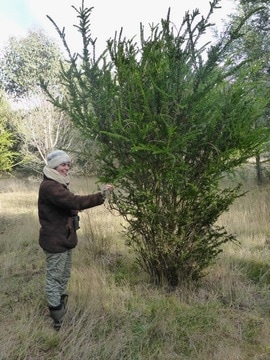 Acacia paradoxa and Tanya. Acacia paradoxa and Tanya. After three years since she last visited, Tanya and I had a pleasant walk through what have become the avenues of trees and shrubs on ImLal South. She was impressed by the growth rate. The trees and shrubs are really ameliorating the wind, creating calm pockets. It was a cold, windy day, so not a lot of birds around – just the usual suspects of wrens, thornbills, white-eared honeyeaters, wattle birds and a grey shrike thrush.
Mixed flocks of blue wrens and fantails were seen flitting around in dense cover in ImLal South: "As you would expect for autumn," said bird survey leader Grant Palmer. One new first – a New Holland honeyeater. Numbers were down overall. Again, to be expected, said Grant: "The migratory species have all flown south."
We spotted a few 'invaders' like rose hip and the pampas grass (on left below). ImLal North is full of thistles (on right below) and the only birds seen are the large woodland varieties like the eastern and crimson rosellas. On the bright side, only one noisy miner was spotted. None were seen in the summer bird survey. What's going on? Maybe it has something to do with the removal of cattle – the only noisy miner seen was on the boundary where cattle are still grazing. It's only a thought bubble... |
AuthorGib Wettenhall is interested in how we carry out large scale landscape restoration that involves the people who live in those landscapes. That, he believes, would build truly resilient landscapes. Categories
All
|
